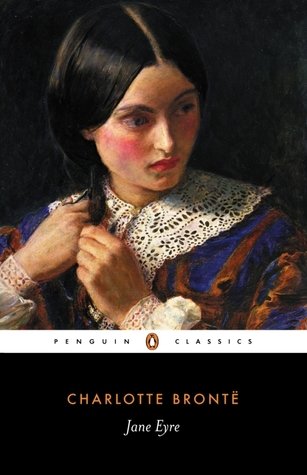The intentions of Charlotte Brontë‘s Jane Eyre are now lost forever to posterity thanks to that 20th-century meddler Jean Rhys and her mendacious Wide Sargasso Sea. But (re)reading it in the confused Christian year of 2022 brought on a new perspective that changed my past in several ways.
My Present Correcting My Past
When I “read” Jane Eyre in the halcyon culture-war fall of 1991, Wide Sargasso Sea was already part of the way the latter was to be read.* As a college freshman, besotted by the thrill of unfettered masculinity (so I thought), these features were invisible to me even with the help of Rhys. Part of the problem was that I “read” Eyre in the 24 hours preceding the class meeting when a four-page essay would be collected. Had even boasted to others that I wrote four pages in the hour before it was due!
* Those who are not my friends will fail to decipher my sarcasm, surely … it is so well hidden.
In fact, reading the Eyre this year has made so clear to me that I surely did not “read” the novel back then. My self-confidence about the four-page essay reflection had already deflated.
My recollection was, most importantly, that the book ended with the dramatic scene of Thornfield burning to the ground at the hand of the previously enchained Bertha. Now I know that is not really the case. It is true that this occurred (Thornfield’s arson), but according to my recollection Jane was a witness to this event rather than one who heard about it second hand from a local merchant.
Moreover, the revelation of Bertha’s existence came on the day set aside for her union with Edward Fairfax Rochester, some 100 pages earlier in the novel. For whatever reason, I’d thought we only learned of Bertha’s existence when the arson occurred. I suspect that my reading was less than scrupulous … (not surprising for a college student whose unfettered masculinity was his first priority).
So What is Jane Eyre About?
Jane Eyre tells the story of the eponymous narrator from orphanhood to marriage. The reader meets her as an orphan living with distant—both spiritually and emotionally—relatives, a wicked … aunt, no less. She is rescued by a poorly administered school that eventually is transformed through inadvertent oversight. She then becomes a governess to a difficult man’s ward and falls in love with that man. But on her marriage day learns her betrothed is already “married,” keeping his wife (Bertha), who is mad, in the attic of the property. This precipitates her immediate departure despite the fact that she loves this man, and Jane accidentally falls in with cousins that she did not know she had, gains a fortune, and almost leaves England to become a missionary in India. But then, through an inscrutable event, she is called back to the man she loves, now a widower and able to be wed.
I can say that were it to have occurred the way I remembered (with the revelation of Bertha at the end!), it would certainly have been more dramatic! But at least one consequence would have been making Rochester even less worthy of forgiveness.
Moreover, the novel would have actually been about Bertha, unlike the way it appears in Jane Eyre, where a madwoman in the attic is just a sad condition impeding Rochester’s paternity and Jane’s happiness. For how does Jane resolve the tragedy of Thornfield and, for that matter, approach so perilously a potential missionary vocation after she has learned that the man she loved has kept his former wife a prisoner in the attic of his house!
Because Jane does forgive Edward and does free her conscience of Bertha. The real dramatic event is her departure from Thornfield to inadvertently discover the home of her cousins and her fortune. She leaves him because she fears becoming a mistress (and giving up her virginity outside of Christian sanction) overcome as she is by the passions** of love. Her departure is a mark of her profound Christian belief, her moral rectitude.
** This word being used in the older sense of an emotional state that one suffers—not the contemporary and so limited sense of sexual passion, despite to whatever degree these may well map over each other.
This is the “intention” of Jane Eyre: we witness of a paradigm of righteous behavior! So observes one of Brontë’s contemporary readers:
Much of the heart laid bare, and the mind explored; much of trial and temptation, of fortitude and resignation, or sound sense and Christianity — but no tameness.
(528)***
It should be said that other contemporary opinions were not in accord with this one.
*** Charlotte Brontë, Jane Eyre, ed. with Introduction Steven Davies. New York: Penguin Classics, 2006. 2nd printing.
Other Malcontents
I think astute present-day readers would gainsay that judgment, especially in light of the fact that somehow Jane forgave Edward and abdicated the Christian duty that St. John tendentiously exercised to impose upon her. She sacrifices herself to take care of a man who has been punished for his iniquity. But that sacrifice is the effect of a love (and therefore unworthy of moral approbation!). What’s more, does she ever really reckon with the existence of Bertha? It seems reasonable to say that the novel’s judgment is that Rochester has suffered and fate has given Jane (and him) some absolution in Bertha’s suicide.
What’s more, there are several so fascinating episodes that would interrupt the judgment of righteous Christianity. For example, the red room, the meaning of which is undoubtedly intuiting and vicariously suffering the future captive life of Bertha. Or what of the “sibyl”—that is, Rochester—who appears at Thornfield offering to read palms. Or simply what of the extended social holiday Rochester spends with friends and the seeming future wife in Miss Ingram, that we are supposed to believe was merely for Rochester to make plain to the latter his unworthiness of being the object of future union?
(Re)Reading Brontë’s Intention
Although I’ve read none of the secondary literature written about the novel, surely some contend Brontë’s own consciousness of the importance of the postcolonial subtext. I do not say this in order to absolve Brontë or to criticize these readers or claim that conscious intention is a basis for literary judgment.

Features like those episodes I mentioned above are in part what make the novel so interesting. And still there’s something to say about the mere peculiarity of Jane’s character. Her so-commented-upon plain-ness, her taciturn-if-not-prickly way in encounters with others.
Or consider the beginning of the Chapter XXI:
Presentiments are strange things! and so are sympathies; and so are signs, and the three combined make one mystery to which humanity has not yet found the key. I never laughed at presentiments in my life, because I have had strange ones of my own. Sympathies, I believe, exist (for instance, between far-distant, long-absent, wholly estranged relatives asserting, notwithstanding their alienation, the unity of the source to which each traces his origin) whose workings baffle mortal comprehension. And signs, for aught we know, may be but the sympathies of Nature with man.
(254)
Very possibly all philosophers (and those philosophically-trained) are aroused … intellectually, that is, by the introduction and elaboration of concepts (especially in threes!)
By presentiment Brontë means the sense that a person had when something is amiss, but I wonder if it means more than that. Does it mean when we know another person suffers? For one important episode occurs when Edward calls for Jane three times and she in turn hears him, albeit over the 36 hours of traveling distance that separated them. In this chapter the presentiment is Jane’s pre-knowledge that something has befallen one of her relatives, namely, the ill-intending John Reed.
Edward and Jane’s communicating is not an example of sympathy, I would think, since Edward is not her relative. But sympathy explains the affinity that Jane feels on meeting Diana, Mary, and St. John. Those turning out to be her unknown cousins.

Neither would this be a sign, since the latter would describe the intervention that nature makes affecting human life, such as the inclement weather moving Jane to the house where her cousins are.
Were I to read the book a third time I might pay more attention to categorize each of the instances of these semiotic effects. Surely someone has already done this work.
Conclusions
To begin, that I am disappointed for having read Jane Eyre and not having found it to be the novel that I thought it was. One of those instances in which the truth turns out to be much less interesting than fantasy. So few instances.****
**** Another instance of the famous Ashley sarcasm
Literary works win my approbation through their style, the author’s consciousness of style. Why I so highly esteem writers like Katherine Anne Porter and Cynthia Ozick (although I might be willing to agree that this is a fault of Ulysses … as controversial as that opinion might seem).
Jane Eyre possesses stylistic moments worthy of celebration, but what makes it enduring is the undecidability of its moral compass. Strives to be a model of conscience and fails, despite itself.
These things said, the later Brontë novel Villette is a more successful literary work (and this opinion I share with lights such as George Eliot and Virginia Woolf!). Less proselytizing, yet unable to be remembered in such interesting ways.
Am I glad that I reread Jane Eyre?
Having just started reading Stendhal’s Charterhouse of Parma, I find comfort in its historical consciousness. Increasingly, historical consciousness is the mark of literature worthy of the canon (for me). Cynthia Ozick’s Trust excels for this reason.
Although at moments bothersome, for the most part I appreciated Steven Davies’ editorial notations throughout Jane Eyre. By these I understood the appearances of Puritanism and Brontë’s literary consciousness (of the Scottish novelist and literary heavyweight Walter Scott, for example). Yet Davies’ editorial annotation is unquestionably directed by the existence of Wide Sargasso Sea. We cannot read Jane Eyre the same way, ever again. These annotations are partially what made the reading worthwhile, in the end.



